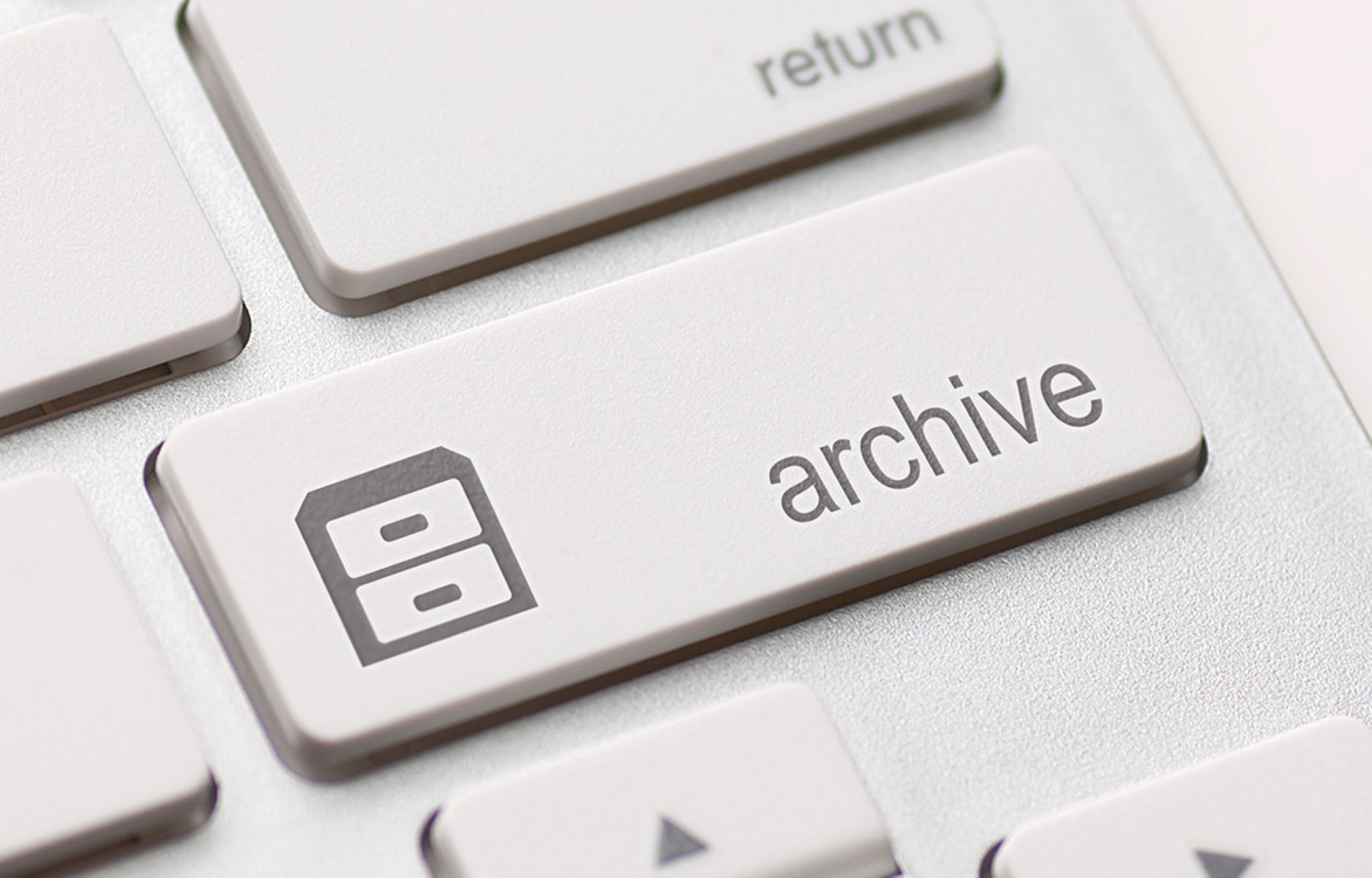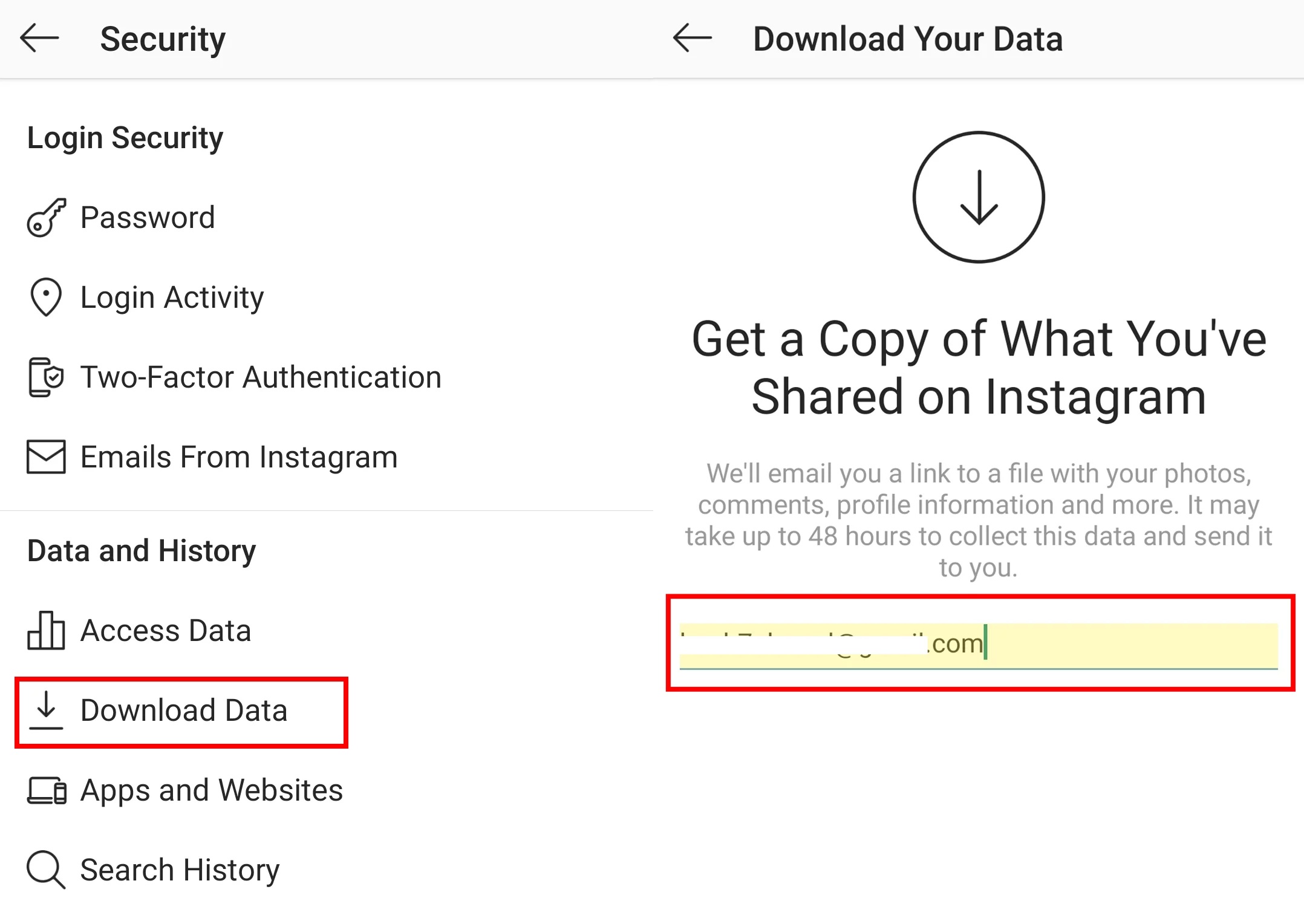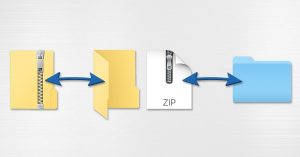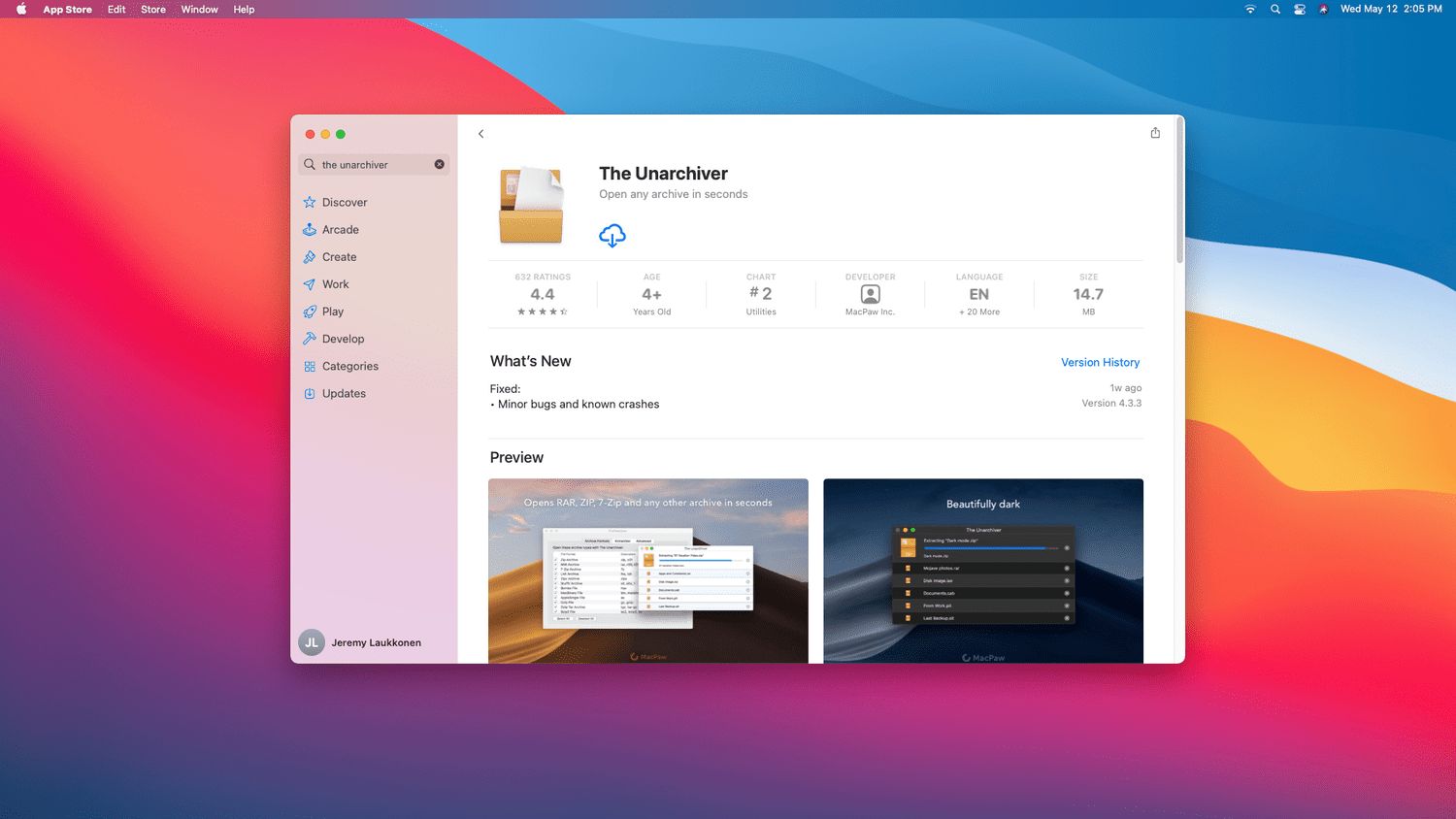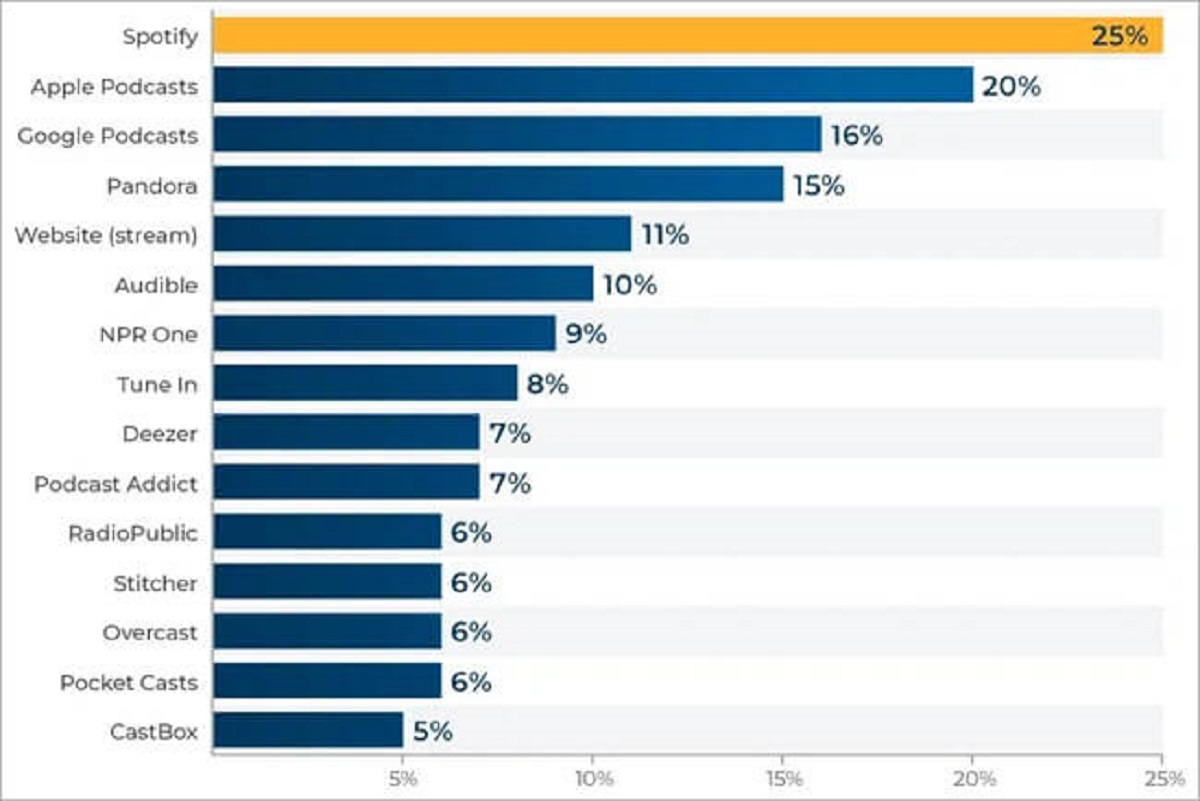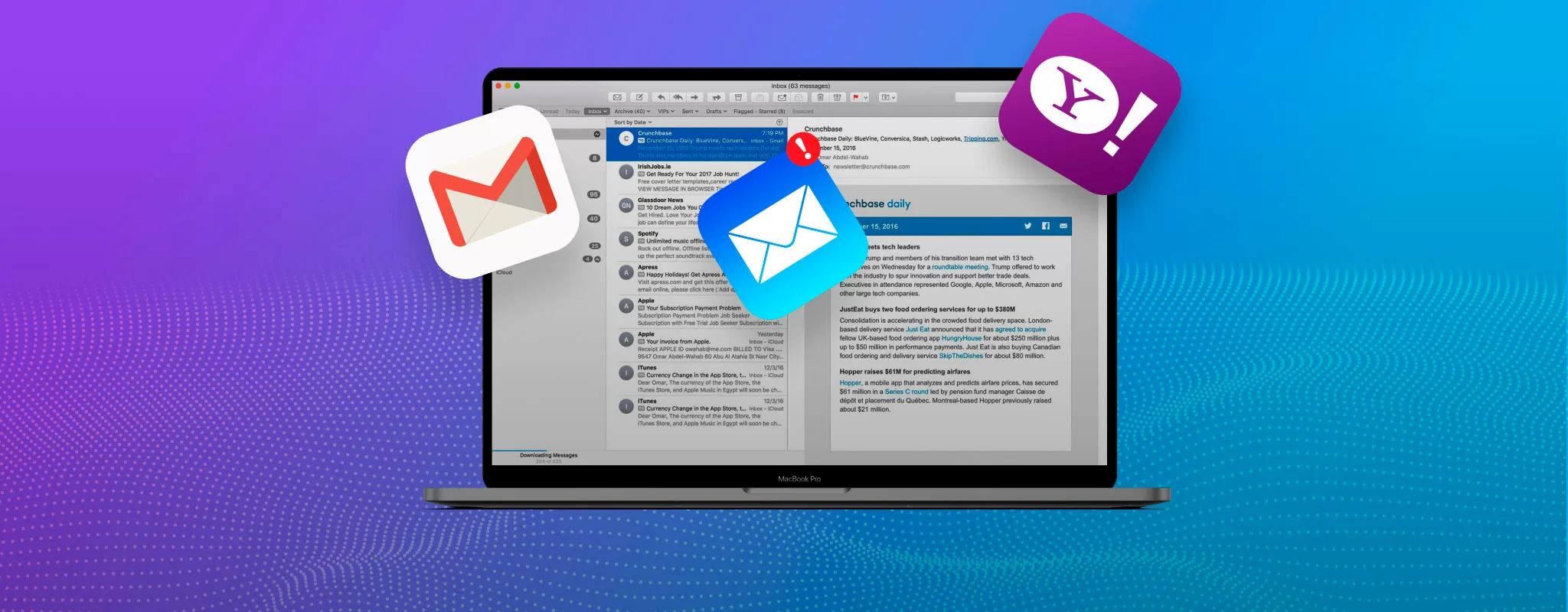Introduction
Welcome to the world of email archiving, a practice that has become increasingly important in today’s digital age. With the exponential growth of email communication, businesses and individuals alike are generating vast amounts of emails on a daily basis. But what happens to these emails once they are sent or received? Are they stored securely and easily accessible when needed? This is where email archiving comes into play.
Email archiving refers to the process of systematically storing and managing emails to ensure their long-term preservation, accessibility, and security. It involves capturing, indexing, and storing emails in a central repository, typically in a separate system from the email server. This allows organizations to efficiently manage their email data, comply with legal and regulatory requirements, and protect themselves from information loss or data breaches.
The concept of email archiving may seem simple, but the underlying technology and processes can be quite intricate. Various factors come into play, including storage capacity, search functionality, retention policies, and compliance regulations. In this article, we will explore the world of email archiving, from its definition and benefits to best practices and challenges.
Email archiving serves several purposes. It helps organizations to:
- Retrieve important emails quickly and easily: Email archiving ensures that important emails can be easily accessed and retrieved when needed. Instead of searching through cluttered inboxes or relying on individual users’ local storage, archived emails are safely stored and easily searchable.
- Comply with legal and regulatory requirements: Many industries have specific rules and regulations regarding email retention and data privacy. Email archiving helps organizations to meet these requirements by securely storing and managing email data, providing a record of communications, and enabling easy retrieval for eDiscovery and audits.
- Protect against data loss and disasters: Email archiving serves as an additional layer of protection against data loss or disasters. By creating a separate repository for emails, organizations can safeguard their valuable information from accidental deletions, system failures, and other unforeseen events.
- Improve storage and server performance: By offloading older or less frequently accessed emails to an archiving system, organizations can free up storage space on their email servers, improving overall performance and reducing system maintenance costs.
As we delve into the world of email archiving, we will explore various concepts, solutions, and best practices. By understanding the fundamentals and benefits of email archiving, organizations can make informed decisions and implement effective strategies to manage their email data successfully.
Definition of Email Archive
An email archive refers to a centralized repository where emails are systematically stored and managed for long-term preservation, accessibility, and security. It is a dedicated system separate from the email server that captures, indexes, and stores emails, enabling organizations to efficiently manage their email data and comply with legal and regulatory requirements.
The primary purpose of an email archive is to ensure the preservation and easy retrieval of emails. It acts as a secure and organized storage space for all incoming, outgoing, and internal emails. Instead of relying on individual users’ local storage or cluttered inboxes, archived emails are stored in a structured manner, making them easier to find and retrieve.
By capturing and indexing emails, an email archive enables users to search for specific emails based on various criteria such as sender, recipient, subject, date, and keywords. This search functionality allows users to quickly locate and access relevant emails, saving time and effort. Additionally, some advanced email archiving solutions offer advanced search capabilities, including full-text search, Boolean operators, and wildcard searches, further enhancing the ease of retrieving emails.
Email archiving also plays a crucial role in compliance and legal matters. Many industries have specific regulations regarding email retention and data privacy. An email archive helps organizations comply with these requirements by securely storing and managing email data, preserving a record of communications, and facilitating eDiscovery and audits. Compliance features such as tamper-proof storage, data encryption, and retention policies ensure that emails are stored in a compliant and legally defensible manner.
Moreover, an email archive provides an additional layer of data protection. By storing emails in a separate repository, organizations can safeguard their valuable information from accidental deletions, system failures, and other unforeseen events. Granular access controls and user permissions further enhance the security of archived emails, ensuring that only authorized individuals can view or retrieve sensitive information.
In summary, an email archive is a centralized system that captures, stores, and organizes emails for long-term preservation and easy retrieval. It serves as a secure repository, complies with legal and regulatory requirements, protects against data loss, and enhances the efficiency of email management. By implementing an effective email archiving solution, organizations can streamline their email workflows, improve compliance, and mitigate potential risks associated with email data.
How Email Archiving Works
Understanding how email archiving works is essential to grasp the underlying technology and processes that enable efficient management and preservation of email data. While the specifics may vary depending on the archiving solution, the general workflow of email archiving involves several key stages.
1. Capture: The first step in email archiving is capturing incoming, outgoing, and internal emails. This process involves intercepting email messages either at the server level or through integration with the email server. The archiving system copies the email content and metadata, such as sender, recipient, subject, and timestamps, ensuring all relevant information is captured for future retrieval.
2. Indexing: Once emails are captured, they need to be indexed for efficient search and retrieval. The archiving system automatically extracts and catalogs the relevant metadata and text content of the emails. This indexing process allows users to perform quick and accurate searches based on various criteria, such as sender, recipient, subject, and keywords.
3. Storage: The captured and indexed emails are stored in a dedicated storage infrastructure. Depending on the archiving solution, this storage infrastructure can be located on-premises or in the cloud. The emails are typically stored in a tamper-proof format to ensure data integrity and compliance. Storage capacity can be scaled as per the organization’s needs, allowing for efficient handling of large email volumes.
4. Retention Policies: Email archiving solutions often incorporate retention policies that govern how long emails are stored in the archive. These policies can be based on industry regulations, legal requirements, or organizational needs. Retention periods can range from months to several years, ensuring compliance with data retention guidelines while still allowing for efficient management of email data.
5. Search and Retrieval: One of the primary benefits of email archiving is the ability to quickly search for and retrieve specific emails when needed. Users can access the archiving system through a user-friendly interface, where they can perform searches using various filters and criteria. The archiving system retrieves and presents the relevant emails, allowing users to view, download, or forward them as required.
6. Security and Access Control: Email archiving solutions prioritize the security of archived emails. They often include features such as data encryption, access controls, and granular user permissions. These measures ensure that only authorized individuals can access and retrieve sensitive email information, protecting it from unauthorized access or tampering.
7. Compliance and Legal Support: Email archiving solutions help organizations meet compliance and legal requirements. They offer features like litigation hold, eDiscovery support, and audit trails. These features enable organizations to respond to legal requests, provide evidence in litigation cases, and demonstrate compliance with industry regulations.
In summary, email archiving works by capturing, indexing, and storing emails in a secure and accessible manner. With the ability to search, retrieve, and maintain data according to retention policies, email archiving solutions streamline email management, enhance compliance, and protect valuable email data.
Benefits of Email Archiving
Email archiving offers a range of benefits for businesses and individuals alike. From improved productivity to enhanced compliance, implementing an email archiving solution can have a significant positive impact. Let’s explore some of the key benefits of email archiving:
1. Efficient Storage Management: Email archiving helps organizations optimize their storage infrastructure by offloading older or less frequently accessed emails from the email server. This frees up valuable storage space and improves overall system performance, ensuring that email servers operate efficiently.
2. Quick and Easy Retrieval: With email archiving, finding and retrieving specific emails is a breeze. Instead of wasting time digging through cluttered mailboxes, users can search and access archived emails rapidly. Advanced search capabilities, such as keyword search and filtering options, make the retrieval process even more efficient.
3. Regulatory Compliance: Compliance with various regulations is a critical concern for many organizations. Email archiving helps businesses meet legal and regulatory requirements by securely storing and managing email data. It ensures the availability of an audit trail, facilitates eDiscovery requests, and helps demonstrate compliance during audits or legal proceedings.
4. Data Protection: Email archiving provides an additional layer of protection against data loss or system failures. By storing emails in a separate repository, organizations can safeguard against accidental deletions, hardware failures, or other unforeseen events. This protects valuable business information and ensures it remains intact and accessible even in the face of unexpected circumstances.
5. Collaborative Efficiency: For organizations that rely heavily on collaboration, email archiving streamlines team processes. Archived emails can be easily shared among team members, enabling efficient collaboration on projects and facilitating knowledge-sharing across the organization. This eliminates the need for forwarding emails and minimizes information silos.
6. Litigation Support: In legal disputes or investigations, email archiving can serve as a crucial source of evidence. By preserving a record of all relevant emails, organizations can respond to litigation holds, subpoenas, or regulatory inquiries more effectively. The ability to retrieve and present specific emails in a timely manner can significantly bolster legal defense and reduce potential legal risks.
7. Business Continuity: Email archiving helps ensure business continuity by providing a secure and off-site backup of important emails. In the event of a disaster or system failure, organizations can quickly retrieve and restore archived emails, minimizing disruptions and ensuring business operations can resume promptly.
8. Streamlined Email Management: Through automated archiving processes and effective search capabilities, email archiving simplifies email management for organizations. It reduces the clutter in mailboxes, improves email organization, and makes it easier to locate and manage email data efficiently. This saves both time and effort for individuals and IT departments.
Email archiving offers a host of benefits that can positively impact businesses and individuals. From storage optimization and compliance assurance to enhanced collaboration and data protection, implementing an email archiving solution is a valuable investment that can streamline email workflows and provide peace of mind.
Common Features in Email Archiving Solutions
Email archiving solutions come in various forms and offer a range of features to address the diverse needs of organizations. While the specific features may vary between different solutions, there are several common features that are typically found in email archiving solutions. Let’s explore some of these key features:
1. Capture and Indexing: The ability to capture and index emails is a fundamental feature of any email archiving solution. This ensures that all incoming, outgoing, and internal emails are captured and stored in a searchable and organized manner. The indexing process includes extracting relevant metadata and content from the emails, enabling efficient search and retrieval.
2. Advanced Search Capabilities: Email archiving solutions provide advanced search functionalities to facilitate quick and accurate retrieval of specific emails. These features include keyword search, filtering options, date ranges, attachment search, and other criteria that allow users to pinpoint the desired emails quickly. Advanced search capabilities enhance the efficiency and effectiveness of email retrieval.
3. Storage Scalability: Effective email archiving solutions offer the ability to scale storage capacity as the organization’s email volume grows. This ensures that there is ample space to store archived emails without the risk of running out of storage. Scalable storage allows for long-term retention of emails and accommodates changing business needs.
4. Data Security: Email archiving solutions prioritize the security of archived emails. They employ various measures such as data encryption, access controls, and authentication protocols to protect sensitive information. These security features ensure that only authorized individuals can access or modify archived emails, safeguarding against unauthorized access or data breaches.
5. Compliance and Legal Support: Many email archiving solutions offer features specifically designed to assist organizations in meeting compliance and legal requirements. These features include litigation hold, email retention policies, audit trails, and eDiscovery support. Compliance and legal support features ensure that organizations can easily demonstrate compliance and respond to legal requests.
6. Tamper-Proof Storage: To maintain data integrity, email archiving solutions often employ tamper-proof storage mechanisms. This ensures that archived emails are stored in a secure and unmodifiable format, preventing unauthorized tampering or deletion. Tamper-proof storage supports compliance requirements and provides assurance that archived emails remain intact and unaltered.
7. Easy Integration: Email archiving solutions are typically designed to integrate seamlessly with existing email systems and infrastructure. Integration capabilities allow for easy deployment and smooth integration into the organization’s email environment. This ensures minimal disruption to existing workflows and maximizes the overall effectiveness of the archiving solution.
8. User Access and Permissions: The ability to control access to archived emails is a crucial feature in email archiving solutions. User access and permissions features allow administrators to define granular access controls, ensuring that only authorized individuals can view or retrieve specific emails. This helps maintain data confidentiality, privacy, and compliance with data protection regulations.
9. Reporting and Analytics: Some email archiving solutions provide reporting and analytics capabilities, allowing organizations to gain insights into their email data. These features enable organizations to monitor email usage, identify trends, and generate reports for compliance audits or internal analysis. Reporting and analytics features provide valuable visibility into the organization’s email communication.
10. Seamless Email Retrieval: The primary goal of email archiving is to enable easy and efficient email retrieval. A common feature in email archiving solutions is the ability to seamlessly retrieve and view archived emails within the user’s email client or a web-based interface. This ensures a smooth user experience and minimizes the need to switch between different applications or interfaces.
While these are common features found in email archiving solutions, it is important for organizations to evaluate their specific needs and choose a solution that aligns with their requirements. Understanding the available features helps organizations make informed decisions and implement an email archiving solution that effectively meets their email management and compliance needs.
Different Approaches to Email Archiving
Email archiving solutions come in various forms, and organizations can choose from different approaches depending on their specific requirements, budget, and infrastructure. Let’s explore some of the common approaches to email archiving:
1. On-Premises Archiving: On-premises email archiving involves deploying and managing archiving infrastructure within the organization’s own data center. This approach provides complete control and ownership over the archiving solution. It offers the flexibility to customize and tailor the infrastructure to meet specific needs and requirements. On-premises archiving can be a preferred choice for organizations that have strict data security and compliance requirements or limited trust in cloud-based solutions.
2. Cloud-Based Archiving: Cloud-based email archiving involves outsourcing the archiving infrastructure and services to a third-party provider. Organizations send copies of their emails to the provider’s cloud platform, where they are centrally stored, indexed, and managed. This approach eliminates the need for on-premises hardware and maintenance, reducing upfront costs and administrative burden. Cloud-based archiving offers scalability, accessibility, and data redundancy, making it an attractive option for organizations that prioritize flexibility, cost-efficiency, and ease of implementation.
3. Hybrid Archiving: Hybrid archiving combines the advantages of both on-premises and cloud-based archiving approaches. It allows organizations to store some archived emails on their own infrastructure while leveraging cloud-based storage for others. Hybrid archiving offers flexibility, as organizations can choose which emails to store on-premises and which to store in the cloud based on factors such as data sensitivity, compliance requirements, or retention policies. This approach provides a balance between security, control, and scalability.
4. Hosted Archiving: Hosted archiving is a variation of cloud-based archiving where the archiving infrastructure is managed by a trusted third-party provider but is deployed on the organization’s own servers or data center. The provider is responsible for maintaining and managing the archiving software, while the organization retains control over the hardware infrastructure. Hosted archiving offers organizations the benefits of cloud-based archiving while providing additional control and customization options.
5. Virtual Machine (VM) Archiving: VM archiving utilizes virtualization technology to create virtual machines dedicated to running the archiving software. These virtual machines can be hosted on-premises or in the cloud. VM archiving provides scalability and resource optimization, allowing organizations to allocate computing resources based on their specific needs. This approach offers flexibility and cost savings when it comes to hardware and infrastructure requirements.
6. In-Place Archiving: In-place archiving is a concept where emails are archived within the existing email system or server. Instead of moving emails to a separate archiving repository, metadata and attachments are stored in a separate location while leaving a pointer or placeholder in the original mailbox. In-place archiving offers simplicity and minimizes disruption to existing workflows, as users can access archived emails directly within their email client interface. This approach is often suited for organizations with limited storage requirements or those with regulated industries where data cannot leave the email system.
Organizations should carefully evaluate their specific needs, consider factors such as compliance requirements, data security, scalability, and budget, before selecting the most suitable approach to email archiving. Each approach has its own advantages and considerations, and the decision should align with the organization’s goals and priorities.
Legal and Compliance Requirements for Email Archiving
Email archiving plays a crucial role in meeting legal and compliance requirements for organizations across various industries. With the increasing importance of email as a form of communication, regulations and laws have been established to ensure the proper retention and management of email data. Let’s explore some of the common legal and compliance requirements associated with email archiving:
1. Regulatory Compliance: Many industries have specific regulations that govern the retention and security of email communications. For example, the healthcare industry must comply with the Health Insurance Portability and Accountability Act (HIPAA), which sets guidelines for the protection and privacy of patient data. Financial institutions are subject to regulations such as the Sarbanes-Oxley Act (SOX) and the Securities and Exchange Commission (SEC) rules. Email archiving helps organizations meet these compliance requirements by securely storing and managing email data and providing a detailed record of communications.
2. Legal Discovery and eDiscovery: In legal proceedings and investigations, email archiving serves as a valuable source of evidence. Courts require organizations to produce relevant emails during the discovery process, where both parties exchange information and evidence. Email archiving ensures that organizations can easily identify, retrieve, and present specific emails in a timely and efficient manner. The ability to demonstrate compliance with legal discovery and eDiscovery requirements can significantly reduce legal risks and help in building a strong legal defense.
3. Retention Requirements: Many industries have specific retention periods for emails. For instance, in the financial sector, certain email communications must be retained for a minimum period of five years. These retention requirements aim to ensure that organizations have a record of their communications and can provide evidence in case of audits, investigations, or legal disputes. Email archiving solutions enable organizations to easily set and enforce retention policies, ensuring compliance with industry-specific regulations.
4. Data Privacy and Protection: Data privacy laws, such as the European Union’s General Data Protection Regulation (GDPR) and the California Consumer Privacy Act (CCPA), require organizations to protect personal information, including emails that may contain sensitive data. Email archiving solutions often include features such as data encryption, access controls, and audit trails to ensure the security and privacy of archived emails. Compliance with data privacy regulations helps organizations avoid costly fines and reputational damage.
5. Preservation of Intellectual Property: Intellectual property (IP) protection is crucial for organizations, especially those engaged in research and development or creative work. Email archiving solutions help ensure the preservation and security of intellectual property communications. Archived emails can be used as evidence in case of intellectual property disputes or to prove originality and ownership of ideas or creations.
6. Business Record Keeping: Email communications often represent important business transactions, agreements, or decisions. Email archiving assists organizations in maintaining accurate and complete records of these communications, serving as a reference for future business activities or audits. Well-documented email archives provide a clear historical record of business activities and can be invaluable in resolving disputes or addressing internal inquiries.
Organizations must stay up to date with the legal and compliance requirements specific to their industry. By implementing an effective email archiving solution, organizations can ensure compliance with industry regulations, protect sensitive information, streamline legal discovery processes, and maintain proper business record keeping practices.
Challenges in Email Archiving
While email archiving is essential for efficient email management and compliance, it also presents certain challenges that organizations must address. Overcoming these challenges is crucial to ensure the effectiveness and success of an email archiving solution. Let’s explore some common challenges in email archiving:
1. Volume and Complexity: The sheer volume of emails generated within organizations can be overwhelming. Managing and archiving massive amounts of emails, each with attachments, metadata, and various formats, can be a significant challenge. The complexity of email archiving increases as organizations deal with different email platforms, user preferences, and mobile devices. Effective archiving solutions must be capable of handling large volumes of emails while ensuring the accuracy and integrity of the archived data.
2. Storage Capacity and Scalability: Email archiving requires a significant amount of storage space, especially for organizations with high email volume or long retention periods. Ensuring adequate storage capacity can be challenging, particularly for organizations with limited IT resources or budget constraints. Additionally, as email data continues to grow exponentially, scalability becomes crucial. Archiving solutions should provide the ability to scale storage capacity seamlessly as the organization’s email data expands.
3. Search and Retrieval Complexity: The primary purpose of email archiving is to facilitate easy and quick retrieval of specific emails. However, effectively searching and retrieving archived emails can be challenging if the archiving solution lacks advanced search capabilities or if the indexed data is incomplete or inaccurate. Complex search requirements, such as multi-criteria searches or complex keyword combinations, can further add to the challenges. Archiving solutions should provide robust search functionality to ensure efficient and accurate retrieval of archived emails.
4. Compliance and Legal Risks: Compliance with industry regulations and legal requirements is a significant challenge in email archiving. Failure to comply with email retention or data privacy regulations can result in severe legal and financial consequences. Archiving solutions must offer features to support compliance, such as retention policies, audit trails, and eDiscovery support. Staying current with evolving regulations and implementing updates in archiving practices is vital to mitigate compliance and legal risks.
5. Technical Compatibility: Organizations employ various email platforms and systems, and ensuring compatibility between the archiving solution and these different systems can be challenging. Integration complexities arise when organizations use multiple email systems, versions, or host platforms. Compatibility issues could hinder the successful implementation and operation of an archiving solution, leading to incomplete or inaccessible email data. Organizations must carefully assess technical compatibility requirements and ensure seamless integration between the email system and archiving solution.
6. User Adoption and Training: Introducing a new email archiving solution often requires user education and training. Resistance to change or lack of awareness about the benefits of archiving can impede user adoption. Additionally, understanding how to effectively use archiving features and comply with archiving policies can be a challenge for users. Organizations should invest in comprehensive user training programs and effective communication strategies to promote user adoption and ensure successful archiving practices.
7. Cost Considerations: Implementing and maintaining an email archiving solution incurs costs associated with licensing, hardware, storage, and IT resources. Organizations with limited budgets may find it challenging to allocate sufficient resources to implement a robust archiving infrastructure. Careful evaluation of cost-effectiveness, including total cost of ownership and return on investment, is crucial to select an archiving solution that aligns with the organization’s financial constraints and long-term objectives.
Addressing these challenges requires a proactive and strategic approach in selecting and implementing an email archiving solution. With careful planning, proper resources, and adherence to best practices, organizations can overcome these challenges and benefit from efficient email management, compliance assurance, and improved productivity.
Best Practices for Email Archiving
Implementing effective email archiving practices is key to ensuring the integrity, accessibility, and compliance of archived email data. By following best practices, organizations can optimize their archiving processes and maximize the benefits of their email archiving solutions. Let’s explore some of the best practices for email archiving:
1. Establish a Clear Archiving Policy: Develop a comprehensive archiving policy that outlines the purpose, scope, and guidelines for email archiving within the organization. Clearly define retention periods, user responsibilities, and any legal or compliance requirements. This policy will serve as a foundation and guide for proper email archiving practices.
2. Understand Legal and Regulatory Requirements: Stay informed about industry-specific regulations and legal requirements related to email archiving. Understand how these requirements impact your organization, such as data retention periods, privacy regulations, and eDiscovery rules. Ensure that your archiving solution satisfies the necessary compliance standards.
3. Implement a Robust Archiving Solution: Invest in a reliable and capable email archiving solution that meets the needs of your organization. Consider factors like scalability, compatibility with existing systems, advanced search functionality, and security features. Evaluate different vendors and select a solution that aligns with your archiving policy and business requirements.
4. Automate Archiving Processes: Automate the capturing and archiving of email data to ensure consistency and efficiency. Automated processes eliminate the risk of human error and ensure that all relevant emails are properly archived. Set up archiving rules and policies for different types of emails to streamline the archiving process and minimize manual intervention.
5. Categorize and Tag Emails: Use categories and tags to organize archived emails. Implement a logical and consistent tagging system that allows for easy retrieval and filtering. Categorizing emails based on topics, projects, or departments can improve searchability and aid in compliance and litigation support.
6. Regularly Monitor and Verify Archiving: Continuously monitor the archiving process to ensure that all emails are being accurately captured and stored. Regularly verify the integrity and accessibility of archived emails to identify any potential issues or gaps. Conduct periodic checks to confirm that archived emails are being retained as per the established policies and legal requirements.
7. Train Users on Archiving Policies: Educate users about the importance of email archiving and provide training on the proper usage of the archiving solution. Ensure that users understand archiving policies, retention periods, and any compliance or legal requirements. Promote a culture of archiving compliance within the organization by regularly communicating the benefits and best practices of email archiving.
8. Implement Data Security Measures: Protect the security and privacy of archived emails through data encryption, access controls, and user permissions. Implement multi-factor authentication for accessing archived emails and restrict access to authorized individuals only. Regularly review and update security measures to address any evolving security threats.
9. Regularly Test the Archiving Solution: Perform regular testing and audits of the archiving solution to ensure its effectiveness and reliability. Test the search and retrieval capabilities to verify that emails can be easily located and accessed when needed. Conduct periodic restore tests to confirm the integrity and recoverability of archived emails.
10. Review and Update Archiving Policies: Regularly review and update your archiving policies to align with changes in regulations, business requirements, or technology advancements. Stay informed about industry best practices and make necessary adjustments to ensure that your email archiving practices remain effective and compliant.
By following these best practices, organizations can establish a solid foundation for their email archiving processes and ensure the integrity, accessibility, and compliance of their archived email data. Implementing these best practices not only enhances email management but also mitigates risk, supports legal requirements, and improves overall organizational efficiency.
Conclusion
Email archiving is an essential practice in today’s digital landscape. It enables organizations to efficiently manage their email data, comply with legal and regulatory requirements, and protect valuable information. By capturing, indexing, and storing emails in a centralized repository, email archiving solutions offer a range of benefits, including efficient storage management, quick and easy retrieval, compliance assurance, data protection, and streamlined email management.
However, implementing email archiving is not without its challenges. Organizations must address the volume and complexity of email data, ensure sufficient storage capacity and scalability, overcome search and retrieval complexities, meet legal and compliance requirements, navigate technical compatibility issues, promote user adoption, and manage costs effectively.
To overcome these challenges, organizations should follow best practices for email archiving. This includes establishing clear archiving policies, understanding legal and compliance requirements, implementing a robust archiving solution, automating archiving processes, categorizing and tagging emails, regularly monitoring and verifying archiving, training users on archiving policies, implementing data security measures, testing the archiving solution, and regularly reviewing and updating archiving policies.
By taking these steps, organizations can effectively manage their email archiving processes, ensuring the integrity, accessibility, and compliance of their archived email data. Furthermore, organizations can optimize their email workflows, improve productivity, minimize legal and compliance risks, and enhance data protection.
In conclusion, email archiving is a vital practice that organizations should consider to efficiently manage their email communications. With careful planning, proper implementation of archiving solutions, and adherence to best practices, organizations can harness the benefits of email archiving while addressing the challenges associated with it. By doing so, organizations can unlock the full potential of their email data and ensure a secure and compliant approach to email management in today’s digital age.







